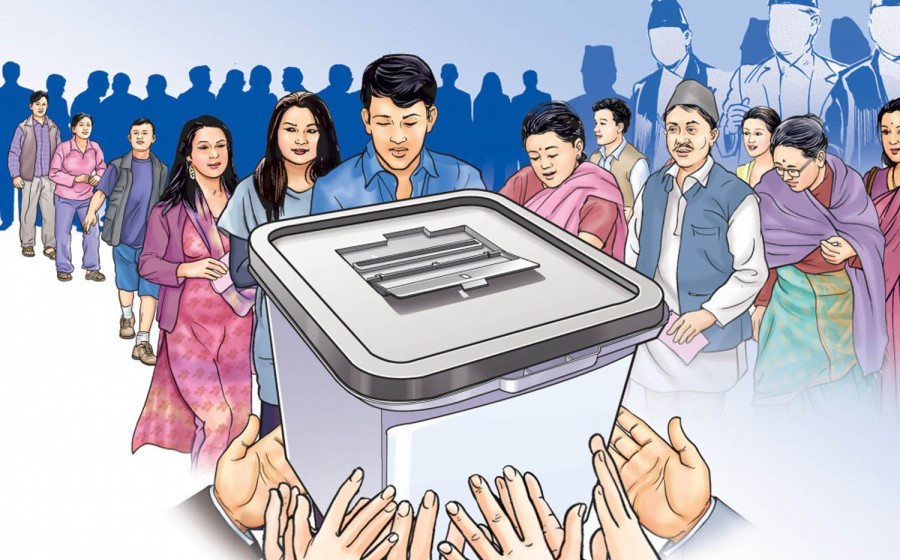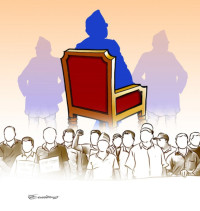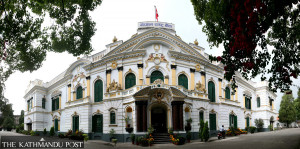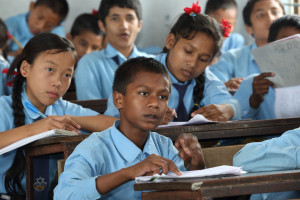Columns
A case for proportional representation
The reason UML appears to be antagonistic to PR is because of its inclusive provisions.
Deepak Thapa
There used to be a running joke some years ago in development circles that the MLD, i.e., the-then Ministry of Local Development (now, the Ministry of Federal Affairs and General Administration, MoFAGA), should actually be known as the UMLD. That was because many of the mandarins running the MLD appeared to take their cue from the UML, the common moniker for Prime Minister KP Sharma Oli’s party, the CPN-UML.
When the secretary at MoFAGA, Dinesh Thapaliya, was hand-picked back in 2019 to become the Chief Election Commissioner (CEC) by Oli during his earlier stint as prime minister, the MLD-UML nexus was the first thing that came to mind. Perhaps such a characterisation is not fair on CEC Thapaliya, but there had to be some underlying reason for appointing a serving secretary to such a powerful position just one day after the previous incumbent’s tenure had ended. Particularly considering that many other constitutional bodies had remained headless for years with Oli showing no inclination to make them functional.
Given this background, a recent piece of news struck me as quite unexpected. Speaking at a function dealing with what can be translated as ‘Electoral Reforms in Nepal: Aspects, Rationale and Relevance’, Thapaliya came out guns blazing at the notion that the current mixed electoral system was responsible for the political instability plaguing the country. That he should oppose the conventional wisdom that has permeated the UML was interesting, to say the least.
Let it be
Let’s consider some of CEC Thapaliya’s strongly expressed views, as reported.
Thapaliya declared that neither the constitution nor any laws had prevented any political party from reaching a 50 percent majority during elections. “Can you tell us which article in the constitution and section of the law prohibits that?” he asked rhetorically. “Is there anything to prevent any party from getting 10 million votes from the 11 million voters?”
Taking aim at the politicians, Thapaliya said it was they who had not been able to satisfy the voters and instead were trying to incite the people by making nonsensical arguments that the fault lay in the electoral system.
He went on to make the astute observation that of the eight multiparty elections the country has undergone so far, there were four—in 1959, 1991, 1999 and 2017—which had seen one party win the majority. In none of these cases, however, had the majority party been able to complete a full term in office. The other four elections had resulted in coalition politics but in no case had the parliament been dissolved midway.
Thapaliya also pointed out that political parties have been arguing that constitutional amendments to the electoral system are needed for the sake of a stable government and proper implementation of inclusive provisions. He said that the issue of political stability can be addressed by raising the threshold entitling parties to a presence in legislative bodies while ensuring candidacies from women, minorities, Janajatis, Dalits and Madheshis during elections was the proper way to ensure greater inclusivity.
If the first-past-the-post part of the election were to be made inclusive, he said, there could be modifications in the ratios of the directly elected and the proportional parts of the election. There is no way we can get rid of the proportional representation (PR) system, he continued. Proportionality is one of our great achievements. Our democracy is an inclusive democracy. There can be no law without inclusive provisions.
The CEC accused the government of being little interested in electoral reforms. He pointed out that it had taken 22 months for the file on the proposed Election Management Act to move from the Home Ministry to the cabinet office next door. He asked how much longer it would take to reach the parliament and in its eventual implementation across the country.
Thapaliya said that he was not aware of any study that had identified the various weaknesses of the current electoral system or showed how another system would ameliorate those weaknesses. And, in a seemingly apparent dig at Oli, given that is how our PM functions, Thapaliya stated that just because someone had a dream one night about changing the electoral system and then declared the next morning it was a national necessity, there is no obligation for everyone to go along.
Green, green grass
If Oli and his ilk had their way, they would have gotten rid of the PR part of the election in a jiffy. I perhaps would not be alone in believing that the only reason the UML is antagonistic towards PR appears to be because of its inclusive provisions. Otherwise, one fails to understand what else would have been its beef with what is universally accepted as a more democratic alternative than the winner-take-all system. The PR saved it from near-oblivion in 2008, and it could have benefitted enormously from such an arrangement in both the 1991 and 1999 elections.
In fact, it had once been quite vehement in asserting that PR is a much fairer system. At the November 8, 2006 meeting of the top leaders of the Seven-Party Alliance and the Maoists, which laid the blueprint for the Comprehensive Peace Accord later in the month, the agreement had been to adopt the current mixed electoral system in the election to the constituent assembly. All the parties agreed with the sole exception of the UML, which insisted disagreeing with its partners for the record: “The CPN (UML) holds a dissenting view that the most democratic method to elect the Constituent Assembly is the proportional system of election.”
It is certainly human nature not to be satisfied with what we have. That was what I was reminded of when reading a recent op-ed in The New York Times. Written just days before Donald Trump re-took office, it argued for exactly the opposite of what our parties have been saying. Boldly titled, ‘How to Fix America’s Two-Party Problem’, it said: “As a new Congress sputters into gear, this rusty binary split—a product of our antiquated winner-take-all electoral mechanisms—is key to understanding why our national legislature has become the divisive, dysfunctional place it is today. It is why more than 200 leading political scientists and historians…signed an open letter in 2022 calling on the House of Representatives to adopt proportional representation—an intuitive and widely used electoral system that ensures parties earn seats in proportion to how many people vote for them. The result is increased electoral competition and, ultimately, a broader range of political parties for voters to choose from.”
And here we are on the other side of the world, arguing that that the “broader range of political parties” is what we must avoid at all costs. The old folks certainly got it right when they said the grass is always greener elsewhere.




 8.12°C Kathmandu
8.12°C Kathmandu















